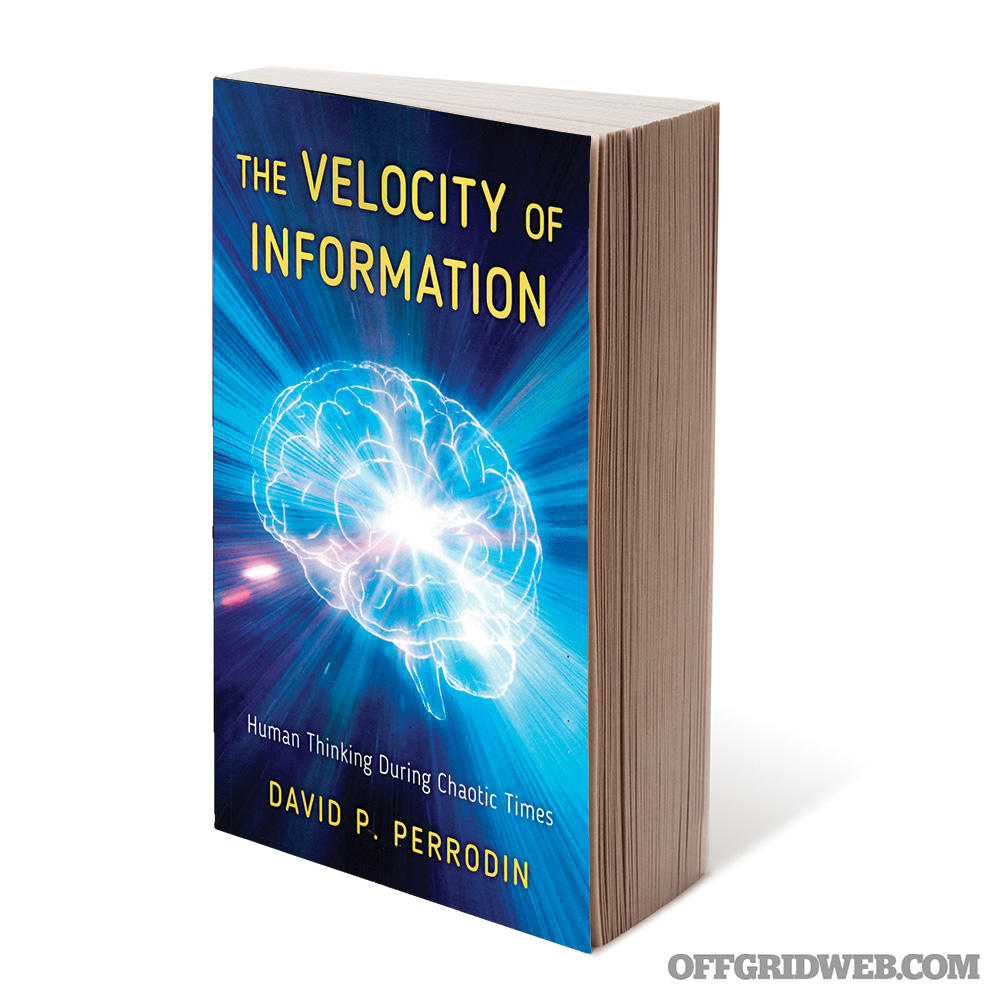The Premise: For Dr. David Perrodin, chaos events, and the human reaction to them has been a focus of his throughout his career. The worldwide chaos created by the COVID-19 pandemic prompted him to examine individual and population level behaviors more closely. Perrodin states that if we study the reaction to different stages of chaos, others will be able to anticipate and position themselves out of harm’s way and ahead of pack. Perrodin explores the effect of time perception during traumatic events and the ability to discern factual information through observation of seemingly mundane details. Unfortunately, by tapping into external sources, such as 24-hour news, people dismiss what should be corroborated by what’s happening directly in front of them.
Our Review of “The Velocity of Information: Human Thinking During Chaotic Times”
The 411: Chaos strikes daily around the world. Whether it’s war, political turmoil, violent protests, the weather, or some other event. Perrodin uses real-life examples to give the reader a wide array of tools to use as a counter strategy to this chaos. Starting with Evaluating Chaos Events, Perrodin guides you through the beginning of these events and helps the reader determine what action they should take for protection. When chaos erupts, information will be flooding in, people will be overwhelmed, and the speed of these details are what he calls the Velocity of Information (VOI).

One area that people experience during a chaos event is a period of intense disbelief, followed by normalcy bias. Normalcy bias refers to an attitude that’s entered when facing a disaster. People with normalcy bias have difficulties reacting to something they have not experienced before. They also tend to interpret warnings in the most optimistic way possible, seizing on any ambiguities to infer a less serious situation.
Each chapter focuses on a different tool to use for sifting through the barrage of information people are bombarded with during chaos. Situational awareness being one of the tools. Most people use it to some degree, but don’t realize its full potential. Many people rarely use it as they’re busy looking at their phone or just looking down at the pavement avoiding eye contact. A simple tool that has been overlooked in this day and age is member checks. Member checks or connecting with a network of confidantes, whether in your neighborhood, in your state, or in another country, can help you establish if the information you’re hearing and seeing from the government or media is factual.
I found the section on situational awareness with Joe Dolio was of terrific value. Dolio is a U.S. Marine Corps veteran, a Certified Fraud Examiner and Certified Forensic Examiner with over 20 years in the corporate security investigations business. In late 2020, Dolio observed signs in local grocery stores limiting the quantity of chicken purchases. As this indicates a potential shortage, Dolio purchased extra chicken and then set out to verify if the information was accurate or not. Using his member check network, Dolio was able to find out that a local cold storage facility was shorthanded due to a COVID-19 outbreak, and that other areas in his state weren’t experiencing shortages. Since the shortages were localized, it was most likely temporary until the grocery chain could set up alternate supplies of chicken. While this is a simple tactic, most people wouldn’t even think of it, let alone have a member check network setup.
Other areas covered include a section on the types of biases people have, as perception of information is influenced by past experiences. Perrodin states that, “The unconscious desire to remain in our comfortable torus (torus theory is the ingrained human behavior pursuing a similar condition of being) is powerful and contributes greatly to cognitive bias in any given situation. Finite Voltage or a person’s breaking point from the stress of a chaos event. Crowd-In Behavior (Cocooning), which is, “The need to protect oneself from the harsh unpredictable realities of the outside world,” The Continuum of Chaos, and The Failure to Regress to the Mean.
The Verdict
The Velocity of Information is a must read for anyone looking to improve their decision-making game. Perrodin breaks a large amount of data down into seven chapters of valuable information using examples from actual chaos events as well as case studies of the people involved to help you with your decision-making process. The principles apply whether it’s for a true chaos event, hurricane, protests, industrial accident, or just plain living. The Velocity of Information will empower its readers with its teachable moments and actionable items. In the words of Perrodin, “Stop outsourcing your thinking. The more you steer your own wheel, the harder it becomes for others to steer you.”
About the Book

Book & Author
The Velocity of Information: Human Thinking During Chaotic Times
By David P. Perrodin
Publisher
Rowman & Littlefield
MSRP
$35 Paperback; $70 Hardcover
URL
www.amazon.com
Pages
188
Rating
>Thrive
Survive
Die
The post Book Review: “The Velocity of Information” by David P. Perrodin appeared first on RECOIL OFFGRID.
By: Offgrid Staff
Title: Book Review: “The Velocity of Information” by David P. Perrodin
Sourced From: www.offgridweb.com/preparation/book-review-the-velocity-of-information-by-david-p-perrodin/
Published Date: Wed, 01 Mar 2023 12:00:00 +0000
------------------------
Did you miss our previous article...
https://bushcrafttips.com/bushcraft-news/here-are-30-foods-that-will-last-25-years
 What is BushcraftSurvival SkillsToolsVideosBushcraft CampsBushcraft KitsBushcraft ProjectsPrivacy PolicyTerms And Conditions
What is BushcraftSurvival SkillsToolsVideosBushcraft CampsBushcraft KitsBushcraft ProjectsPrivacy PolicyTerms And Conditions
